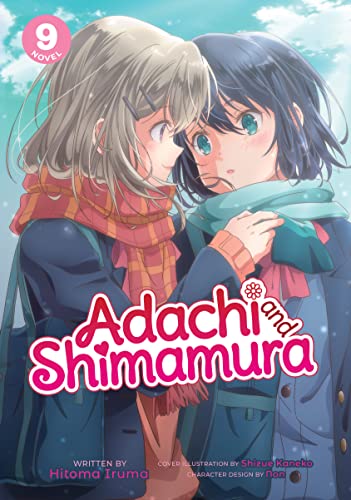By Hitoma Iruma and Non. Released in Japan by Dengeki Bunko. Released in North America by Seven Seas. Translated by Molly Lee.
The self-improvement of Shimamura continues in this volume, following up from the last one. We see Shimamura reflecting on her past self and her tendency to deliberately forget about everyone around her, o the point where it’s an active choice. But now she has Adachi in her life and as her girlfriend. The trouble is, as Adachi points out to her here, she’s very hard to read. Shimamura tends to have one mode, which is “whatever”, and when you are a stressed and insecure young lesbian like Adachi, that just makes you think that the relationship is entirely one-sided. And credit to Shimamura, she really tries hard here, even using the word love to show Adachi how serious she is. Admittedly their relationship has not really progressed beyond holding hands, but given the two participants and their emotional ages that’s not only unsurprising but likely a good thing. I hope future books will show us Adachi’s self-improvement as well. As for Yashiro… she is perpetually the same.
After Shimamura tells a curious Yashiro about her junior high years of rebellion (which consisted of skipping class and not much else), we get the meat of the first half of the book, which is telling us a bit about Hino and Nagafuji’s childhood. This comes up because Hino’s father, who is not the best at communicating, tells her she isn’t important to the family legacy. Hino, who is thirteen in this flashback, does not really take this well (though, as is fairly typical with this author’s works, a lot of the emotional turmoil is left for the reader to fill in themselves) and decides to run away from home. After getting permission. And also taking her maid. And Nagafuji. The second half of the book is Christmas, and shows us an adorable date between our lead couple, Adachi breaking out the Chinese-style dress again, and Christmas dinner at the Shimamuras with a surprise guest, which may carry over into the next book.
This is the final volume with illustrations by Non, who I believe had been ill, and the illustrations are mostly ones used from other promotional materials – there are no interior ones. Which is a shame, but also allows us to see the pasts of most of the main cast without having to see them attempted as “3 years younger”. The Hino and Nagafuji stuff was good, though Hino’s narration works far better (and is far longer) than Nagafuji’s. It’s also implied that her parents have a marriage of convenience and that her mother and head maid are childhood friends with benefits. It’s heavily implied this is what Hino could have with Nagafuji too, though the idea of Nagafuji as a maid is horrifying. The other interesting part of the book is the relationship between the two moms. Mrs. Adachi reads very much like her daughter only cynical and bitter, and Shimamura likewise has her daughter’s “well, whatever” mood only extroverted to the nth degree. It’s kind of fun.
This wasn’t terrific, but is at least solid, even if it read a bit like a short story collection at times. The best parts were Shimamura’s forwardness. We’ll see if she can keep that up.


Speak Your Mind